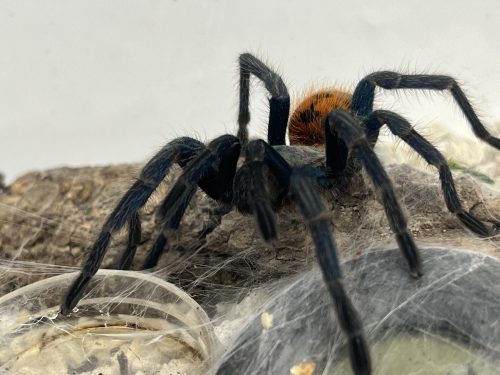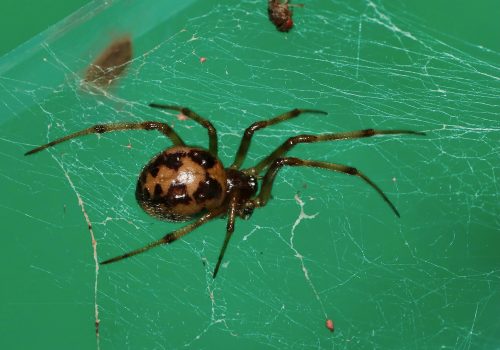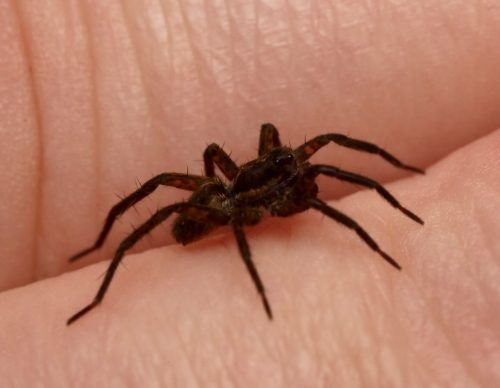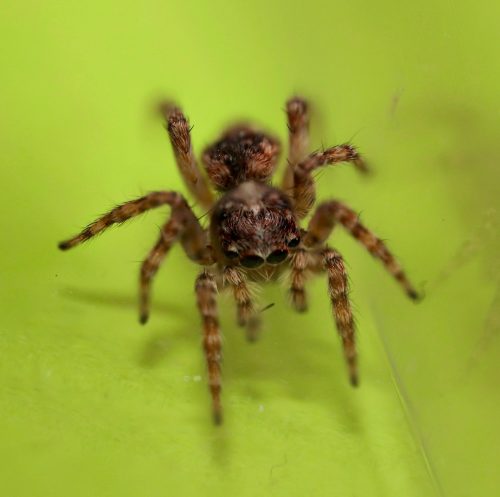I’ve mentioned my crazy evil cat before, but here’s another of my little friends, my greenbottle blue tarantula, Blue.

They are just coming down off a massive threat posture, which is a change. For a long time, they’ve been skittish and timid. I turn on the lights in the lab, they run and hide. I rattle the door a little bit when I go to feed them, they run and hide. A shadow moves across their container, they run and hide. I figured I’d adopted a cowardly spider.
Lately, though, as they mature — I can tell by how their pigment is darkening to a deep blue from the prior orange — they’ve gotten aggressive. Now they boldly stand in the middle of their space and turn to face me when I walk up to them, but not in a friendly way. When I put a mealworm in their face, no more fleeing, but instead, they rear up on their 4 hindlegs and threaten with their forelimbs, and flash their fangs at me. I’m feeding them! Calm down!
It’s becoming a trend that any animal I take care of gets psycho hostile.
Whoa, wait…could it be me?










